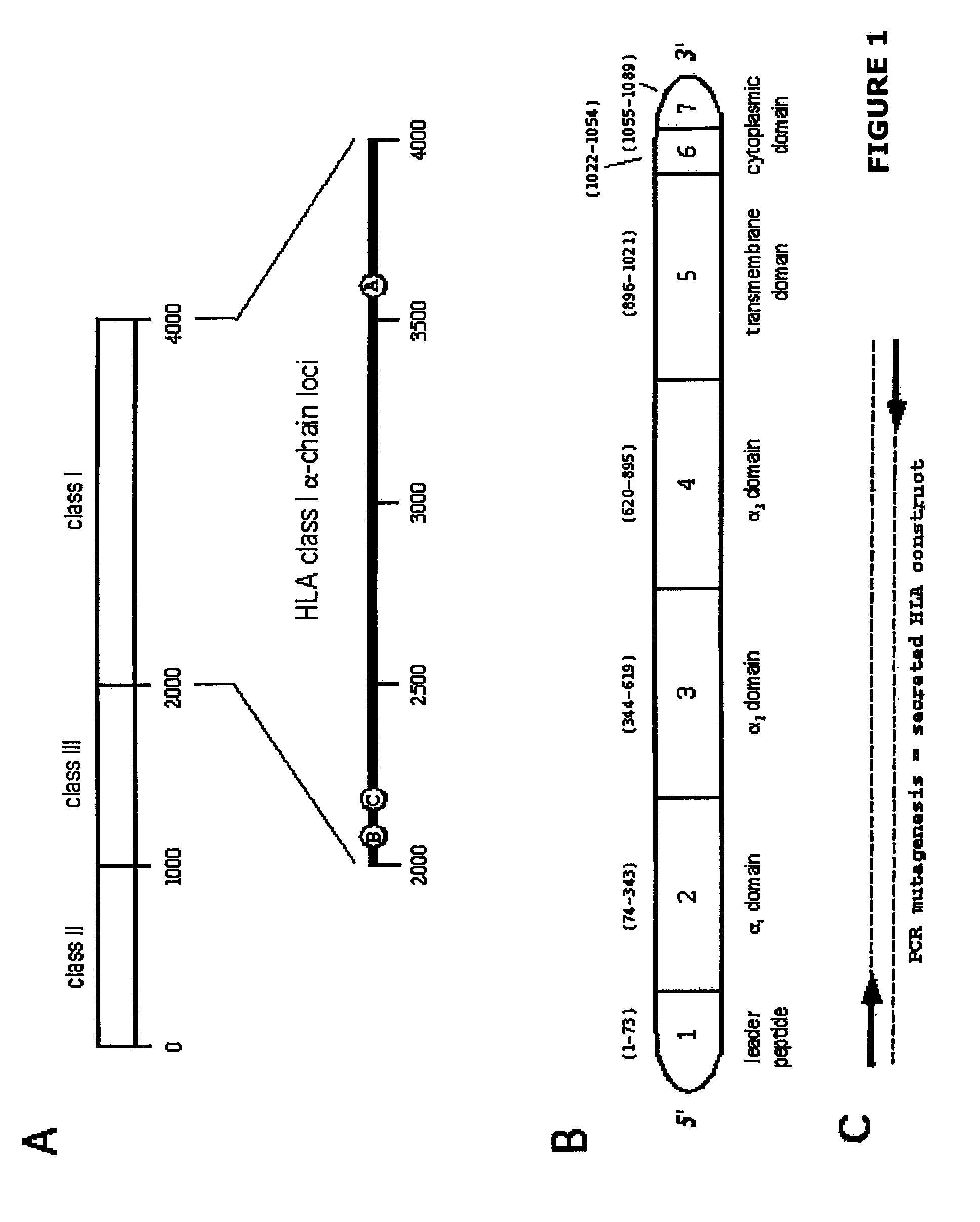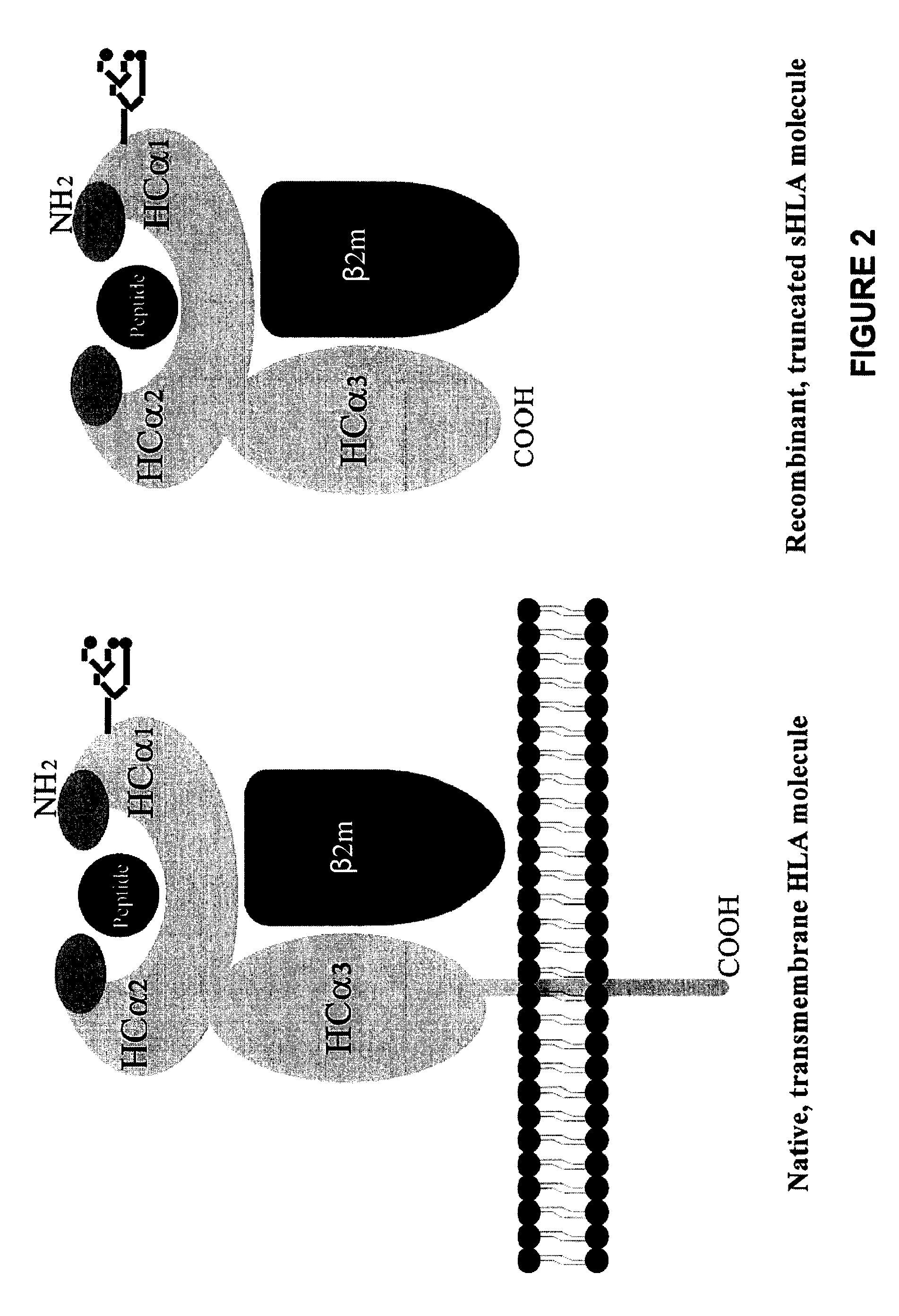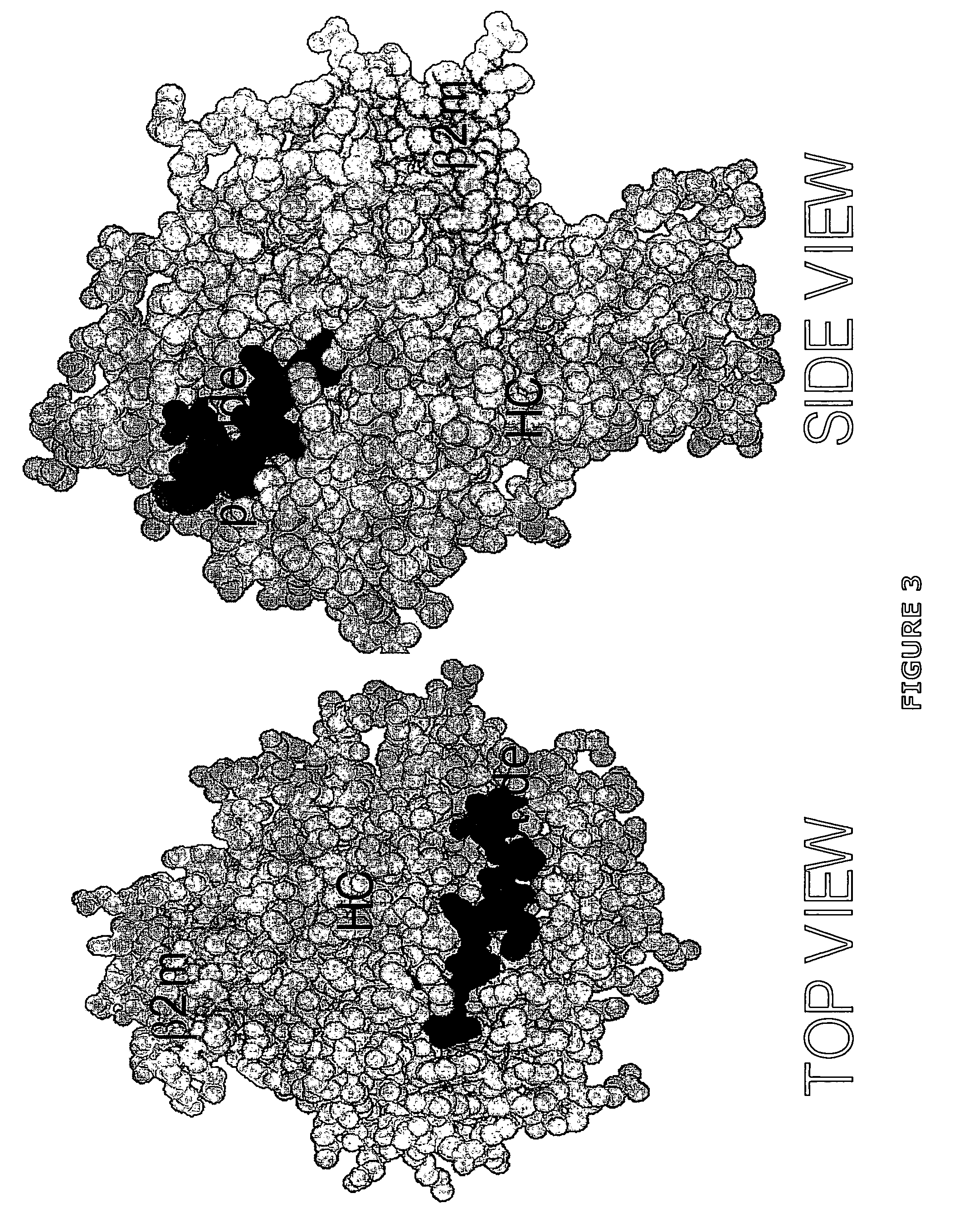Methods for removing anti-MHC antibodies from a sample
a technology of antimhc antibodies and samples, which is applied in the field of methods for removing antimhc antibodies from samples, can solve the problems of difficult reproduction, laborious production and isolation of individual native hla molecules, and limited patterns of antibody recognition to hla, so as to facilitate the purification facilitate the capture of soluble hla molecules, and facilitate the effect of increasing the expression of truncated pcr products
- Summary
- Abstract
- Description
- Claims
- Application Information
AI Technical Summary
Benefits of technology
Problems solved by technology
Method used
Image
Examples
experimental examples
Purification of Individual, Soluble MHC Molecules
[0088]The present invention is directed to a unique method for producing, isolating, and purifying class I molecules in substantial quantities. As an example of the method of the present invention, the following graphs show that the test allele B*0702BSP produced in static culture can be purified to homogeneity and eluted as intact molecule. FIG. 5 demonstrates that a W6 / 32-coupled affinity column can be saturated with crude harvest containing sHLA. Individual values were determined through a standardized sandwich ELISA procedure using W6 / 32 as capturing antibody and anti-β2m as detecting antibody. This ELISA procedure allows only the detection of intact sHLA molecules. After successful loading, the column is washed with PBS. FIG. 6 shows the washing step. The removal of total protein and active sHLA measured through OD280 and ELISA, respectively, can be followed. It shows that after 500 ml of wash volume, impurities are successfully ...
PUM
| Property | Measurement | Unit |
|---|---|---|
| pH | aaaaa | aaaaa |
| pH | aaaaa | aaaaa |
| wash volume | aaaaa | aaaaa |
Abstract
Description
Claims
Application Information
 Login to View More
Login to View More - R&D
- Intellectual Property
- Life Sciences
- Materials
- Tech Scout
- Unparalleled Data Quality
- Higher Quality Content
- 60% Fewer Hallucinations
Browse by: Latest US Patents, China's latest patents, Technical Efficacy Thesaurus, Application Domain, Technology Topic, Popular Technical Reports.
© 2025 PatSnap. All rights reserved.Legal|Privacy policy|Modern Slavery Act Transparency Statement|Sitemap|About US| Contact US: help@patsnap.com



